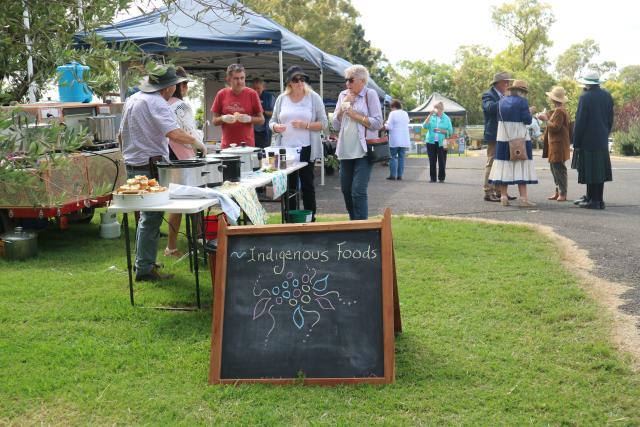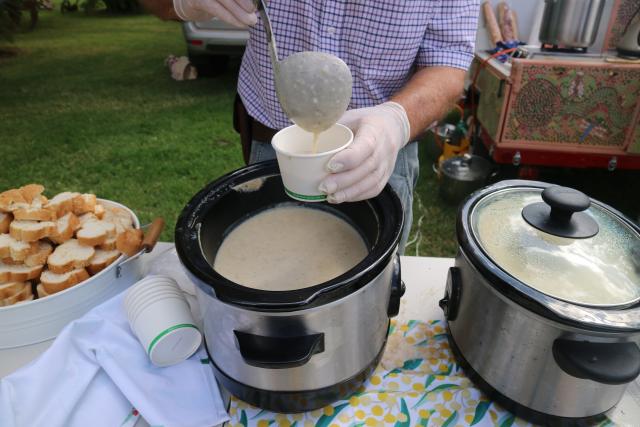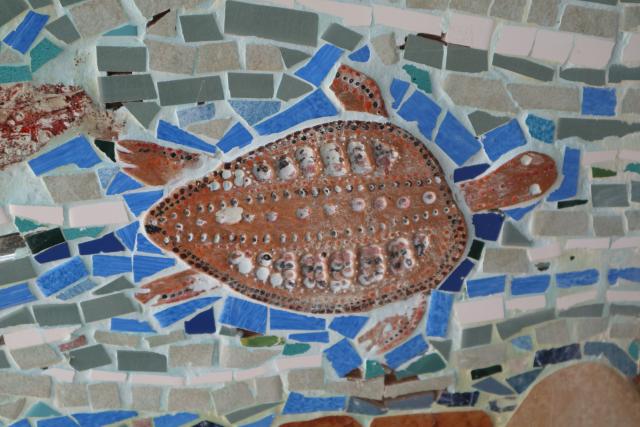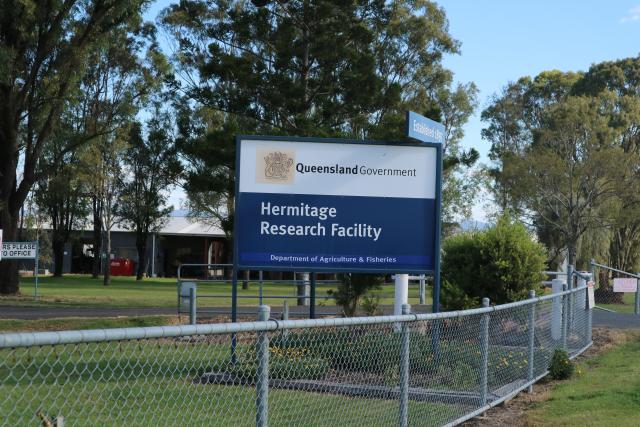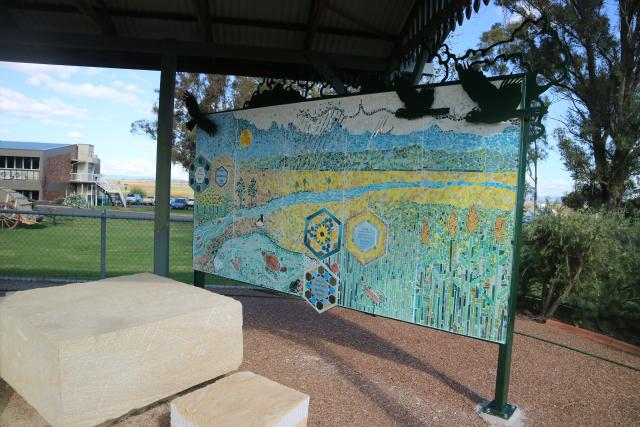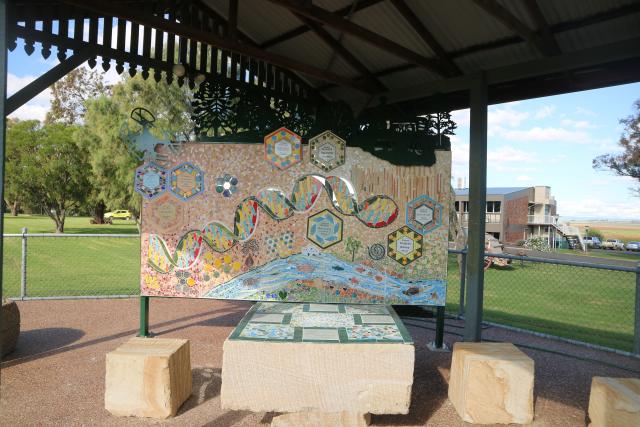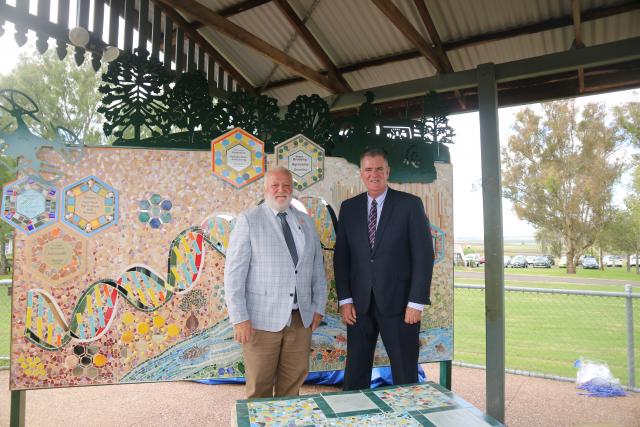
By Dominique Tassell
On Wednesday 20 April, Queensland’s oldest agricultural research facility unveiled two mosaics celebrating its proud heritage of supporting science and the community for over 100 years.
Hermitage Research Facility unveiled two mosaics in their visitor information hut, made to commemorate the facility’s 125th anniversary.
Minister for Agricultural Industry Development and Fisheries and Minister for Rural Communities Mark Furner was present at the ceremony.
“The mosaics are part of a package, including mosaicked picnic chairs and tables crafted from Yangan sandstone, which has been designed to encourage visitors to learn about Hermitage’s contribution to food production,” Mr Furner said.
“This spectacular art installation is the result of a truly collaborative effort to capture the essence of how agricultural research, and traditional foods and food production systems have sustained people today and for the past 60,000 years.
“Local artist Chris Hulme has worked closely with Southern Downs Regional Council residents, councillors, past and present Hermitage staff, local Elders, and Indigenous students from Scots PCG College to craft these spectacular and inspiring pieces.
The mosaics were funded through a Southern Downs Regional Council Regional Arts and Development Fund grant, the Queensland Alliance for Agriculture and Food Innovation, and the Department of Agriculture and Fisheries.
The Hermitage Research Facility 125th Anniversary mosaics used two tonnes of Yangan sandstone and were made possible by one talented artist, three community workshops, eight Indigenous students, 44 passionate community members, 200 hours of creative endeavour, 125 years of supporting science and the community, and 60,000 years of traditional food knowledge.
One of these workshops was held in October last year.
Southern Downs Regional Council residents, councillors, past and present Hermitage staff and ten Indigenous students from Scots PCG College attended the workshop.
Galibal Elder Aunty Kali, former Warwick Mayor Ron Bellingham, and Hermitage researchers Emma Mace and Alan Cruickshank spoke about food production and the importance of gathering and preserving knowledge for food security.
Chris Hulme incorporated information from the workshop into the design of the mosaic.
Mr Hulme is working with the School of Total Education to offer mosaicking workshops, and anyone interested should contact him at christopherjhulme13@gmail.com.
Speakers included Professor Matthew Morrell, the Director of The Queensland Alliance for Agriculture and Food Innovation, David Hamilton, the Former Chair of Ag Institute Australia, and Janice (Jan) Stenton, whose father Ron Moore worked at the facility and was instrumental in early sorghum research.
Jan recounted her childhood memories of the facility, moving to the area from Gatton when she was three years old.
She said she was sent out to work with her dad a lot, and this played a major part in her life.
When she did her PhD she dedicated it to her dad “and those little red seeds”.
Her dad was a sorghum breeder, who started the program at Hermitage.
Jan recounted childhood summers full of planting, and working on irrigation and pollination.
Jan and the current staff were amused to learn just how many of the techniques Jan and her father are still employed.
“These days we get paid to do it” though, someone in the audience joked.
Jan said her dad did pay her for her work, a dollar a day, which was plenty for the 60s.
“I was rich on that.”
She said there were plenty of benefits to working with her dad, and told of the time she met Judith Wright.
The unveiling emphasised the importance of traditional food knowledge, and attendees were treated to a lunch of bunya nut soup and galangal green soup.

